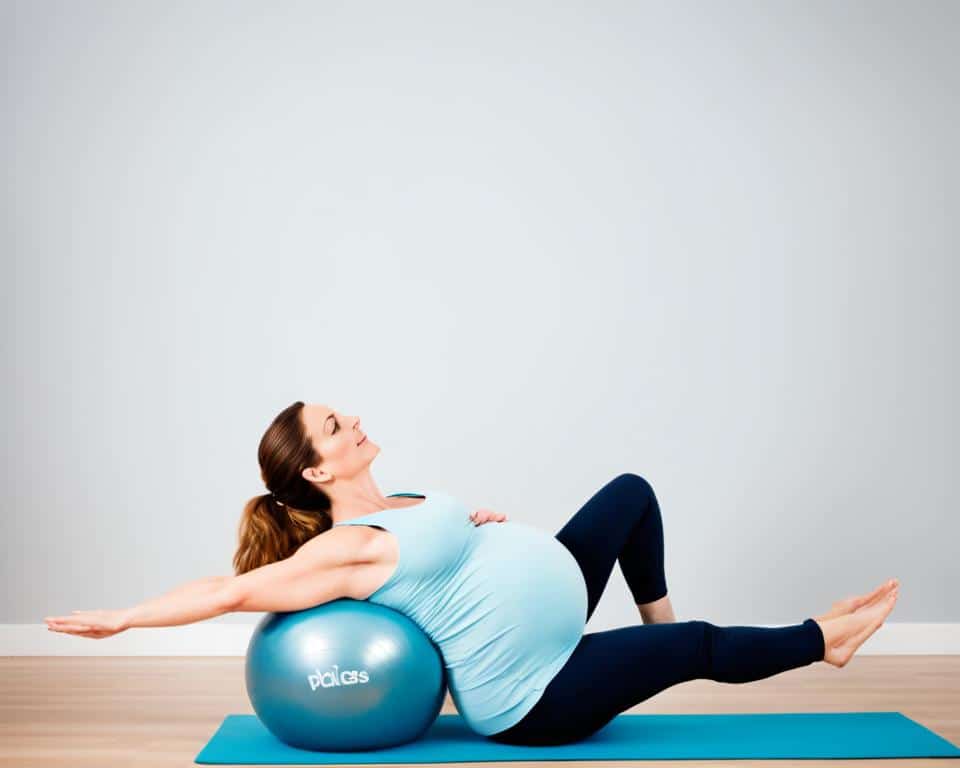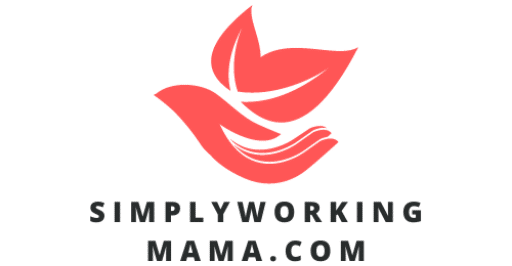Pregnancy is a special time in a woman’s life, and staying active during this period is essential for maintaining physical and mental well-being. Pilates ball pregnancy exercises, also known as exercise ball pregnancy workouts, can be a fantastic way for expecting moms to stay fit and healthy. These exercises, performed with the help of an exercise ball, offer a low-impact and effective workout that targets key muscle groups, improves stability, and enhances comfort throughout pregnancy.
Using the right exercise ball for pregnancy is crucial to ensure optimal support and safety. It is recommended to choose the appropriate size exercise ball based on your height. A ball that is too small may not provide enough stability, while a ball that is too large may be challenging to maneuver. Consult with your healthcare provider or a fitness professional to determine the best exercise ball for your needs.
Key Takeaways:
- Pilates ball pregnancy exercises are a safe and effective way for expecting moms to stay active during pregnancy.
- Consult with a healthcare provider before starting any exercise plan during pregnancy.
- Using an exercise ball provides support and comfort while performing these exercises at home.
- Choose the appropriate size exercise ball based on your height.
- Perform pregnancy ball exercises with proper form and technique to maximize their benefits.
Is it Safe to Use an Exercise Ball During Pregnancy?
In general, exercise balls can be safely used during pregnancy, but it is important to consult with a healthcare provider before starting any exercise routine. While seated exercises with the exercise ball are generally safe, it is advisable to avoid exercises that may cause instability or increase the risk of falling. It is also recommended to avoid exercises that involve lying on the back, as this can lead to a drop in blood pressure. Pregnancy can cause changes in energy levels and discomfort, so it is important to modify exercise routines as needed.
Benefits of Using an Exercise Ball During Pregnancy
- Engages core muscles
- Improves balance and stability
- Relieves back and pelvic discomfort
- Assists in proper alignment of the pelvis
- Enhances overall flexibility and strength
It is crucial to prioritize safety and listen to your body throughout your pregnancy journey. Consulting with a healthcare provider and following their guidance will ensure that you exercise safely and effectively with an exercise ball.
Exercise Ball Safety Guidelines During Pregnancy
- Choose an exercise ball that suits your height and weight.
- Avoid exercises that may cause instability or a risk of falling.
- Avoid exercises that involve lying on your back.
- Modify exercises as per your energy levels and comfort.
- Start slowly and gradually increase the intensity of your workouts.
- Listen to your body and stop if you experience any pain or discomfort.
- Stay hydrated and take breaks as needed during exercise sessions.
Benefits of Pregnancy Ball Exercises
Pregnancy ball exercises provide numerous benefits for expecting moms. Incorporating these exercises into a prenatal fitness routine can contribute to a more comfortable and healthy pregnancy journey. Let’s explore the advantages of using a birthing ball and the benefits it offers:
Alleviate Pressure on the Lower Back and Pelvis
One of the key benefits of pregnancy ball exercises is that they help alleviate pressure on the lower back and pelvis. As the baby grows, the body undergoes changes that can lead to discomfort and strain in these areas. Using a birthing ball allows for gentle movements and stretches that provide relief and promote relaxation.
Improve Core Strength and Stability
Engaging in pregnancy ball exercises can also improve core strength and enhance overall stability. The instability of the exercise ball requires the body to activate core muscles to maintain balance and control during movements. Strengthening the core during pregnancy can help support the growing belly and reduce the risk of back pain.
Aid in Pelvic Floor Muscle Engagement
Pregnancy ball exercises are beneficial for pelvic floor muscle engagement. The gentle bouncing or rocking motions on the ball can help activate and strengthen the pelvic floor muscles. Strengthening these muscles during pregnancy can promote better bladder control and aid in postpartum recovery.
Promote Proper Alignment of the Pelvis
Using a birthing ball can also promote proper alignment of the pelvis. Sitting or gently moving on the ball encourages the pelvis to open up and align in an optimal position. This can be particularly beneficial during pregnancy and labor, as it may help ensure a smoother and more comfortable birthing experience.
image:

Birthing Ball Benefits During Labor
Aside from the benefits during pregnancy, using a birthing ball during labor can provide additional advantages. Sitting, rocking, or swaying on the ball can help relieve back pain and pressure caused by contractions. The upright position supported by the ball can also facilitate the progress of labor by helping gravity work in favor of the birthing process.
Ready to start incorporating pregnancy ball exercises into your routine? Let’s move on to Section 4 and discover some recommended exercises!
Recommended Pregnancy Ball Exercises
When it comes to staying active during pregnancy, pregnancy ball exercises are a great option. These exercises utilize an exercise ball to help strengthen muscles, improve flexibility, and enhance overall pregnancy comfort. Let’s explore some recommended pregnancy ball exercises:
1. Wall Squat with Exercise Ball
This exercise targets the lower body, specifically the quadriceps, glutes, and hamstrings. Stand with your back against a wall and place the exercise ball between your lower back and the wall. Slowly squat down, keeping your back straight and the exercise ball secure. Return to the starting position and repeat.
2. Ab Crunch on Exercise Ball
The ab crunch on an exercise ball is a safe and effective way to engage your core muscles. Sit on the exercise ball and slowly walk your feet forward until your lower back is supported by the ball. Cross your arms over your chest and engage your core as you perform a crunch, lifting your upper body off the ball. Return to the starting position and repeat.
3. Pelvic Floor Exercises on Exercise Ball
Pelvic floor exercises, also known as Kegels, can be done on an exercise ball to strengthen the pelvic floor muscles. Sit on the exercise ball with your feet flat on the floor. Gently squeeze your pelvic floor muscles and hold for a few seconds before releasing. Repeat this exercise multiple times.
4. Ball March
The ball march exercise targets the core and lower body. Sit on the exercise ball with your feet hip-width apart and flat on the floor. Lift one foot off the ground and march in place, alternating between legs. Engage your core to maintain your balance and stability.
5. Ball Bridges
Ball bridges help strengthen the glutes, hamstrings, and core muscles. Lie on your back with your feet on top of the exercise ball, knees bent and arms at your sides. Push through your heels to lift your hips off the ground, forming a straight line from your knees to your shoulders. Hold for a few seconds and then lower your hips back down. Repeat this movement.
6. Kneeling Ball Roll-outs
Kneeling ball roll-outs engage the core, shoulder, and arm muscles. Start by kneeling on the floor with your hands on the exercise ball. Slowly roll the ball forward, extending your arms in front of you, while keeping your core engaged. Roll the ball back towards your knees and repeat the movement.
7. Back and Upper-Body Stretch on Exercise Ball
This stretch targets the back, chest, and shoulders. Sit on the exercise ball with your feet flat on the floor. Walk your feet forward and gently lie back on the ball, allowing your back to arch over the ball. Extend your arms overhead and reach towards the floor, feeling a stretch in your upper body. Hold for a few seconds and then return to the starting position.
8. Ball Circles
Ball circles are a gentle exercise that helps improve mobility and stability. Sit on the exercise ball with your feet flat on the floor. Place your hands on the ball for support. Slowly engage your core and move your hips in a circular motion, clockwise and then counterclockwise. Focus on maintaining control and stability throughout the movement.
9. Figure-8 on Exercise Ball
The figure-8 exercise on an exercise ball targets the core muscles and improves overall stability. Sit on the exercise ball with your feet shoulder-width apart. Engage your core and lean forward slightly. Move your hips in a figure-8 motion, maintaining control and balance throughout the movement.
Remember to perform these exercises with proper form and technique and listen to your body’s cues. Start with a comfortable number of repetitions and gradually increase as you build strength and confidence. Incorporating these recommended pregnancy ball exercises into your fitness routine can help you stay active and feel your best during pregnancy.
| Exercise | Targeted Muscles |
|---|---|
| Wall Squat with Exercise Ball | Quadriceps, Glutes, Hamstrings |
| Ab Crunch on Exercise Ball | Abdominal Muscles |
| Pelvic Floor Exercises on Exercise Ball | Pelvic Floor Muscles |
| Ball March | Core, Lower Body |
| Ball Bridges | Glutes, Hamstrings, Core |
| Kneeling Ball Roll-outs | Core, Shoulders, Arms |
| Back and Upper-Body Stretch on Exercise Ball | Back, Chest, Shoulders |
| Ball Circles | Core, Mobility, Stability |
| Figure-8 on Exercise Ball | Core, Stability |
Using a Birthing Ball During Labor
A birthing ball can be a helpful tool during labor. It provides support, comfort, and a natural way to enhance the birthing process. Sitting on a birthing ball can help open up the pelvis, allowing the baby to descend and engage in the birth canal. This position also promotes proper alignment of the baby’s head, which can facilitate a smoother delivery.
One of the benefits of using a birthing ball during labor is the relief it can offer from the discomfort and pressure associated with labor pains. The gentle bouncing or rocking motion on the ball can help alleviate some of the intensity, allowing the laboring woman to find a more comfortable position and manage contractions effectively.
Many women find that using a birthing ball during early labor helps them cope with contractions and provides a sense of calm and relaxation. It can help create a supportive and soothing environment, promoting a positive birthing experience.
Consultation with the healthcare provider and the delivery center is crucial to understand their policies and recommendations regarding the use of a birthing ball during labor. Different facilities may have specific guidelines or restrictions based on individual circumstances.

Benefits of Using a Birthing Ball During Labor:
- Facilitates pelvic opening and engagement of the baby
- Provides support and comfort during labor
- Alleviates pressure and discomfort associated with labor pains
- Promotes relaxation and coping mechanisms during contractions
- Allows for a variety of positions and movements
- Enhances natural birthing process
Using a birthing ball during labor can be a valuable addition to a woman’s birthing plan. Its benefits extend beyond physical support and comfort, offering emotional reassurance as well. Every laboring woman is unique, so it is essential to consult with healthcare providers and birthing professionals to determine the best approach to incorporate a birthing ball into the labor journey.
| Position or Movement | Description |
|---|---|
| Sitting on the Ball | This position helps open up the pelvis and provides support and comfort during contractions. It allows for gentle bouncing or rocking movements. |
| Leaning Over the Ball | Leaning forward while kneeling or standing, with the upper body supported by the ball, can help alleviate back pain and provide relief during contractions. |
| Hip Circles | This movement involves rotating the hips in circular motions while sitting on the birthing ball. It can help relieve pressure and encourage the baby’s descent. |
| Supported Squats | Leaning back against the ball and performing gentle squatting motions helps open up the pelvis and promotes contractions. |
Conclusion
Pilates ball pregnancy exercises, performed with an exercise ball, offer numerous benefits for expectant mothers. These exercises effectively engage the core muscles, improve stability, and alleviate pressure on the lower back and pelvis. The good news is that these exercises can be easily done at home, under the guidance of a healthcare provider.
Using a birthing ball during labor can provide much-needed support, comfort, and help with positioning and pain relief. By choosing the right size exercise ball and performing the exercises with proper form and technique, expecting moms can maximize the benefits. Incorporating pilates ball pregnancy exercises into a regular fitness routine can significantly enhance the comfort and overall well-being throughout the pregnancy journey.
Whether it’s relieving back pain, improving core strength, or aiding in labor, the benefits of incorporating pregnancy ball exercises into an exercise routine are undeniable. To make the most of these exercises, expectant moms should consult their healthcare provider, choose the appropriate exercise ball, and perform the exercises with care. By focusing on physical health during pregnancy, moms-to-be can enjoy a more comfortable and healthier pregnancy experience.



